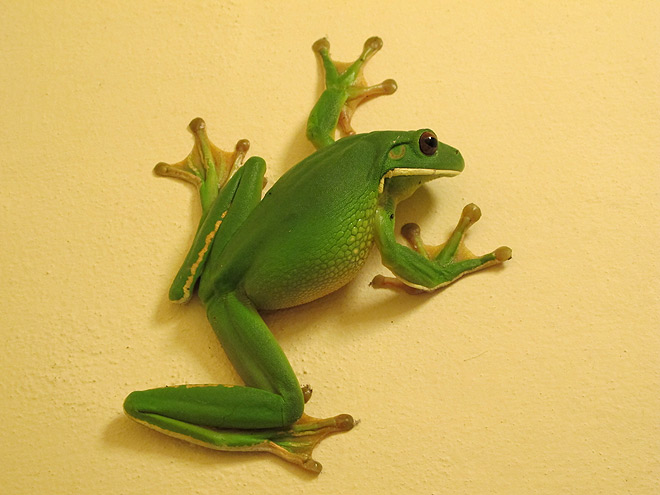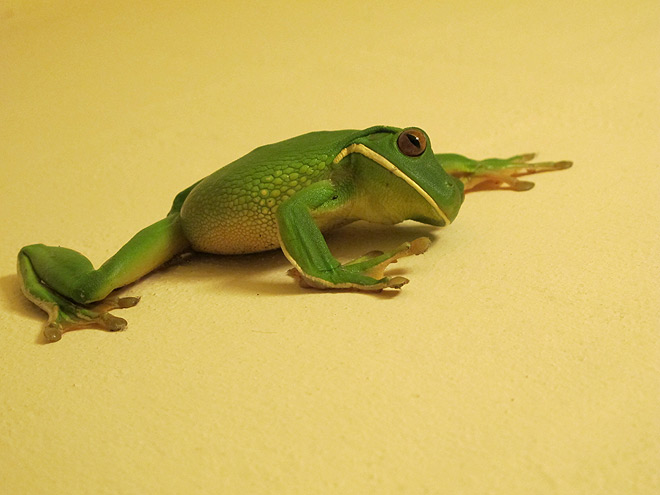Unlike the adage suggests, the White-lipped Tree Frog doesn’t suffer from fear or terror, rather its name owes to a brilliant white stripe that runs from its lower lip to its shoulder. Other hued characteristics include thighs that turn salmon pink in the males when they’re sexually excited.

The White-lipped Tree Frog also possesses several other unique characteristics. Its call sounds like a dog barking, while when in distress, it sounds somewhat like a cats “mew”. It’s also the largest tree frog in the world, yet somehow manages to get itself tangled up in fruit boxes, becoming lost after being distributed thousands of kilometres south.
They can also range in colour from pure green to a greenish brown or even bone. Their favourite places are in paperbark swamps and leafy suburbs solely in North Queensland, New Guinea, and the Bismarck and Admiralty islands. It prefers coastal areas and environments that are lower than 300 metres in altitude.

In reproduction, when the male’s thighs have well and truly calmed down, the female White-lipped Tree Frog will lay over 1000 eggs at a time around 3 millimetres in diameter. Breeding usually occurs in still water after a period of rain. The female can reproduce after two years of age, and lives until about the age of 10.
Typically hunting on humid evenings, The White-lipped Tree Frog eats a wide variety of insects. Suction cups on their toes allow them to climb walls so they can catch a greater variety of species. They also breath through their skin, and contact by humans should be avoided, as any oil on hands can damage their skin and therefore affect their livelihood.
White-lipped Tree Frogs are distributed over an area totalling about 12% the size of Australia, which is entirely concentrated in the country’s north-east. Their numbers are thought to have remained stable, however threats such as disease, parasites and cancer continue to thwart the species.
You may be lucky enough to encounter one of these splendid creatures in and around the grounds of Thala.
